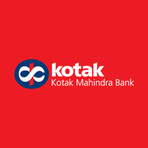HDFC Bank's Strategic Moves: A New Chapter in Indian Banking
January 7, 2025, 4:02 am

Location: India, Rajasthan, Jaipur
Employees: 10001+
Founded date: 2017
Total raised: $251.3M

Location: India, Maharashtra, Mumbai
Employees: 10001+
Founded date: 1994
Total raised: $1.15M
In the bustling world of Indian banking, HDFC Bank is making waves. The Reserve Bank of India (RBI) has opened a door for HDFC Bank to acquire a stake in three key players: Kotak Mahindra Bank, AU Small Finance Bank, and Capital Small Finance Bank. This move is more than just numbers; it’s a strategic play in a competitive landscape.
The RBI's approval allows HDFC Bank to hold up to 9.5% of the share capital or voting rights in these banks. This decision is valid for one year, giving HDFC Bank a window until January 2, 2026, to navigate its next steps. But there’s a catch. HDFC Bank must ensure that its group entities, including HDFC Mutual Fund and HDFC Life Insurance, do not exceed this limit. It’s a delicate dance of compliance and ambition.
HDFC Bank’s regulatory filing reveals a cautious approach. While the bank does not plan to invest immediately, it recognizes the potential for its aggregate holding to surpass the 5% threshold. Thus, an application was submitted to the RBI for an increase in investment limits. This proactive stance showcases HDFC Bank's commitment to growth while adhering to regulatory frameworks.
The banking sector in India is a complex web. The RBI’s guidelines on shareholding are designed to maintain stability and prevent monopolistic practices. HDFC Bank’s maneuvering within these guidelines reflects its understanding of the landscape. It’s not just about acquiring stakes; it’s about strategic positioning in a market that is constantly evolving.
Meanwhile, HDFC Bank’s financial performance tells another story. The bank reported a 7.6% year-on-year growth in average advances, reaching ₹26,27,600 crore for the December 2024 quarter. This growth is fueled by a robust retail segment, which saw a 10% increase. Commercial and rural banking loans also expanded by 11.5%. However, corporate and wholesale loans faced a contraction of 10.3%. This mixed bag illustrates the challenges and opportunities within the banking sector.
Deposits are the lifeblood of any bank, and HDFC Bank is thriving here too. Average deposits surged by 15.9% year-on-year, totaling ₹24,52,700 crore. Time deposits, in particular, saw a significant rise of 21.5%. This shift indicates a growing preference among customers for secure, interest-bearing options in a fluctuating interest rate environment. The modest 6% growth in Current Account Savings Account (CASA) deposits suggests a strategic pivot towards more stable forms of savings.
In addition to these figures, HDFC Bank is actively engaging in loan securitization. The bank sold loans worth ₹21,600 crore during the quarter, bringing the year-to-date total to ₹46,300 crore. This strategy not only improves liquidity but also allows the bank to manage risk more effectively. The period-end gross advances stood at ₹25,42,500 crore, reflecting a 3% growth from the previous year. These numbers paint a picture of a bank that is not just surviving but thriving.
The financial results for the quarter ending December 31, 2024, will undergo a limited review by statutory auditors. This step is crucial for maintaining transparency and trust in the banking system. Investors and stakeholders will be watching closely, eager to see how HDFC Bank’s strategies unfold.
The interplay between HDFC Bank’s growth and its strategic acquisitions is a testament to its vision. The bank is not merely reacting to market conditions; it is shaping them. By eyeing stakes in other banks, HDFC Bank is positioning itself as a formidable player in the financial sector. This move could lead to synergies that enhance its service offerings and customer base.
As the banking landscape in India continues to evolve, HDFC Bank stands at the forefront. Its ability to adapt to regulatory changes while pursuing growth opportunities sets it apart. The approval from the RBI is a green light, but it also comes with responsibilities. HDFC Bank must navigate this new terrain with care, ensuring compliance while maximizing its potential.
In conclusion, HDFC Bank is writing a new chapter in its story. The approval to acquire stakes in other banks is a strategic move that could redefine its position in the market. Coupled with strong financial performance, HDFC Bank is poised for a future filled with possibilities. The road ahead may be fraught with challenges, but with a clear vision and strategic foresight, HDFC Bank is ready to seize the opportunities that lie ahead. The banking sector is a chess game, and HDFC Bank is playing to win.
The RBI's approval allows HDFC Bank to hold up to 9.5% of the share capital or voting rights in these banks. This decision is valid for one year, giving HDFC Bank a window until January 2, 2026, to navigate its next steps. But there’s a catch. HDFC Bank must ensure that its group entities, including HDFC Mutual Fund and HDFC Life Insurance, do not exceed this limit. It’s a delicate dance of compliance and ambition.
HDFC Bank’s regulatory filing reveals a cautious approach. While the bank does not plan to invest immediately, it recognizes the potential for its aggregate holding to surpass the 5% threshold. Thus, an application was submitted to the RBI for an increase in investment limits. This proactive stance showcases HDFC Bank's commitment to growth while adhering to regulatory frameworks.
The banking sector in India is a complex web. The RBI’s guidelines on shareholding are designed to maintain stability and prevent monopolistic practices. HDFC Bank’s maneuvering within these guidelines reflects its understanding of the landscape. It’s not just about acquiring stakes; it’s about strategic positioning in a market that is constantly evolving.
Meanwhile, HDFC Bank’s financial performance tells another story. The bank reported a 7.6% year-on-year growth in average advances, reaching ₹26,27,600 crore for the December 2024 quarter. This growth is fueled by a robust retail segment, which saw a 10% increase. Commercial and rural banking loans also expanded by 11.5%. However, corporate and wholesale loans faced a contraction of 10.3%. This mixed bag illustrates the challenges and opportunities within the banking sector.
Deposits are the lifeblood of any bank, and HDFC Bank is thriving here too. Average deposits surged by 15.9% year-on-year, totaling ₹24,52,700 crore. Time deposits, in particular, saw a significant rise of 21.5%. This shift indicates a growing preference among customers for secure, interest-bearing options in a fluctuating interest rate environment. The modest 6% growth in Current Account Savings Account (CASA) deposits suggests a strategic pivot towards more stable forms of savings.
In addition to these figures, HDFC Bank is actively engaging in loan securitization. The bank sold loans worth ₹21,600 crore during the quarter, bringing the year-to-date total to ₹46,300 crore. This strategy not only improves liquidity but also allows the bank to manage risk more effectively. The period-end gross advances stood at ₹25,42,500 crore, reflecting a 3% growth from the previous year. These numbers paint a picture of a bank that is not just surviving but thriving.
The financial results for the quarter ending December 31, 2024, will undergo a limited review by statutory auditors. This step is crucial for maintaining transparency and trust in the banking system. Investors and stakeholders will be watching closely, eager to see how HDFC Bank’s strategies unfold.
The interplay between HDFC Bank’s growth and its strategic acquisitions is a testament to its vision. The bank is not merely reacting to market conditions; it is shaping them. By eyeing stakes in other banks, HDFC Bank is positioning itself as a formidable player in the financial sector. This move could lead to synergies that enhance its service offerings and customer base.
As the banking landscape in India continues to evolve, HDFC Bank stands at the forefront. Its ability to adapt to regulatory changes while pursuing growth opportunities sets it apart. The approval from the RBI is a green light, but it also comes with responsibilities. HDFC Bank must navigate this new terrain with care, ensuring compliance while maximizing its potential.
In conclusion, HDFC Bank is writing a new chapter in its story. The approval to acquire stakes in other banks is a strategic move that could redefine its position in the market. Coupled with strong financial performance, HDFC Bank is poised for a future filled with possibilities. The road ahead may be fraught with challenges, but with a clear vision and strategic foresight, HDFC Bank is ready to seize the opportunities that lie ahead. The banking sector is a chess game, and HDFC Bank is playing to win.
